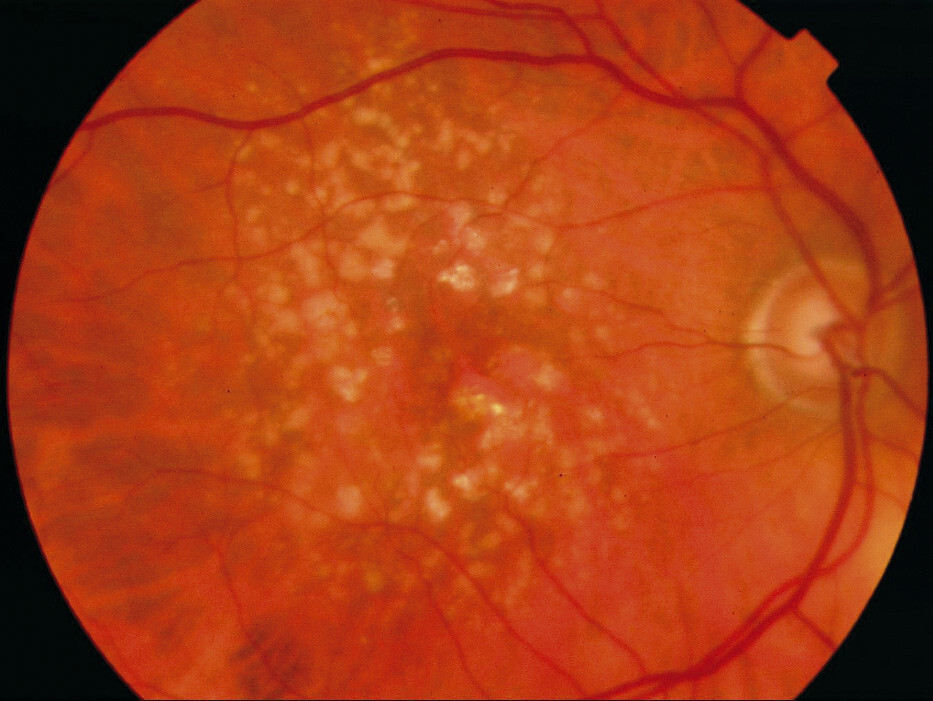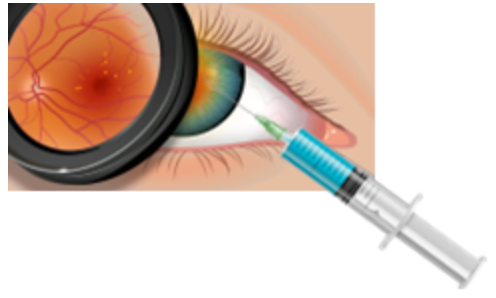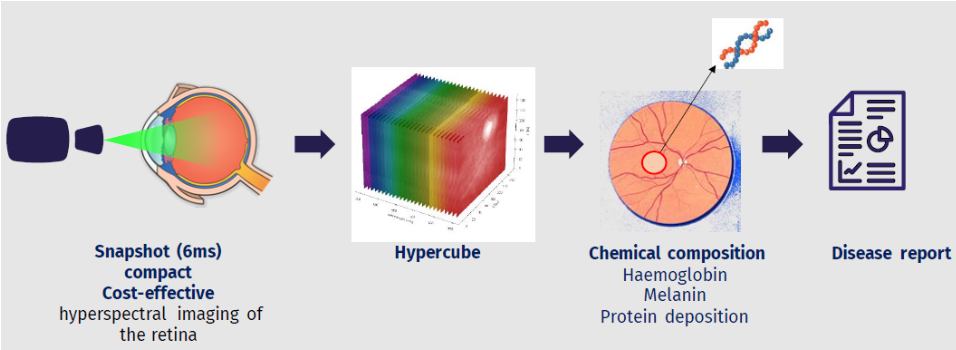Eyes on the future: Early detection of AMD through Hyperspectral Imaging

Age-related macular degeneration is a progressive disease and a leading cause of irreversible blindness in individuals above 50 years of age. It affects over 200 million people worldwide with around 2 million suffering complete vision loss and 6 million having severe vision impairment. As the global aging demographic grows, the disease prevalence is estimated to reach 300 million cases by 2040.
AMD starts with drusen deposition (yellow accumulations of lipids and proteins) in the macular region of the eye. Drusen deposition is attributed to aging. However, in AMD, the depositions gradually expand in size and number causing disease manifestation. This can be coupled with the permanent degeneration of photoreceptors (Atrophy) or excessive formation of blood vessels (Choroidal Neovascularization).

Choroidal Neovascularisation leads to wet AMD which causes complete vision loss within months of disease onset, by deposition of blood and fluid in the eye. Atrophy, commonly termed as dry AMD, is the common form of AMD that progresses slowly over several years. Depending upon the amount of drusen accumulation, disease severity is defined as the early, intermediate, or advanced stage.
Being a multifactorial condition, AMD can have several causes associated with it. These include senescence, cumulative oxidative stress, smoking, and genetics. While the exact pathogenesis is not completely understood, AMD affects people in all parts of the world irrespective of gender and generally impacts both eyes. Nevertheless, distinct types of AMD can be dominant in different populations. For example, late-stage wet AMD is more dominant in Asian populations but there are more incidents for early-stage AMD in Europe. The limited availability of early diagnostics could be one reason for this observation.
While current therapies can slow down disease progression, they are nonetheless, incapable of restoring vision. Besides, these therapies are expensive and intrusive requiring frequent intravitreal injections (i.e., injections in the eye) of Vascular Endothelial Growth Factor (VEGF) inhibitors.

The best way to combat AMD is through early detection and prevention. The current screening methods include Colour Fundus Photography and Optical Coherence Tomography. Fundus cameras are widely spread but give limited information making the diagnosis more difficult. While Optical coherence tomography is the present gold standard, it is expensive and is thus limited to specialists (ophthalmologists) and not primary care. This delays detection and increases the disease burden on the healthcare systems and deteriorates the patient’s quality of life.
Our recent study (here), demonstrated the applicability of Hyperspectral Imaging in efficient retinal screening. Mantis Photonics’ Snapshot Hyperspectral camera can capture images of the retina in 36 wavelengths in a quick snapshot increasing the functional insights. By selecting different wavelengths and using overlay images, important biomarkers of AMD such as blood vessels, macular pigment and drusen can be easily identified, quantified, and classified.

We are dedicated to further developing this technology for integrating AI-based monitoring and screening with improved optical components and larger sensors.
In conclusion, our technology offers a promising avenue for early AMD detection and its evolution. With proactive innovation, we strive to revolutionize the diagnostic landscape, not only significantly reducing the burden on healthcare systems, but also enhancing the individual quality of life for patients affected by this prevalent eye condition.
References
- Flores R, et al. Age-Related Macular Degeneration: Pathophysiology, Management, and Future Perspectives. https://pubmed.ncbi.nlm.nih.gov/34130290/
- Jian B, et al. Trends and disparities in disease burden of age-related macular degeneration from 1990 to 2019. https://doi.org/10.3389/fpubh.2023.1138428.
- Joseph A, 2020. https://www.health.harvard.edu/blog/age-related-macular-degeneration-early-detection-and-timely-treatment-may-help-preserve-vision-2020112421362.
- Thomas CJ, et al. Age-Related Macular Degeneration. https://pubmed.ncbi.nlm.nih.gov/33926642/
- Wong WL, et al. Global prevalence of age-related macular degeneration and disease burden projection for 2020 and 2040: a systematic review and meta-analysis. https://pubmed.ncbi.nlm.nih.gov/25104651/
- Diego G, et al. A novel concept of compact, snapshot hyperspectral camera for ophthalmology. A novel concept of compact, snapshot hyperspectral camera for ophthalmology. (opticaopen.org)